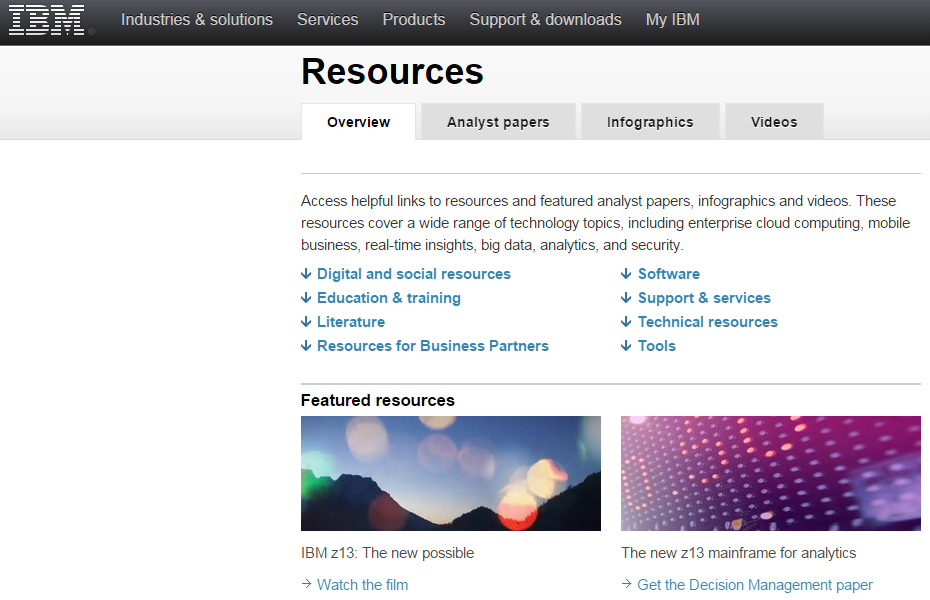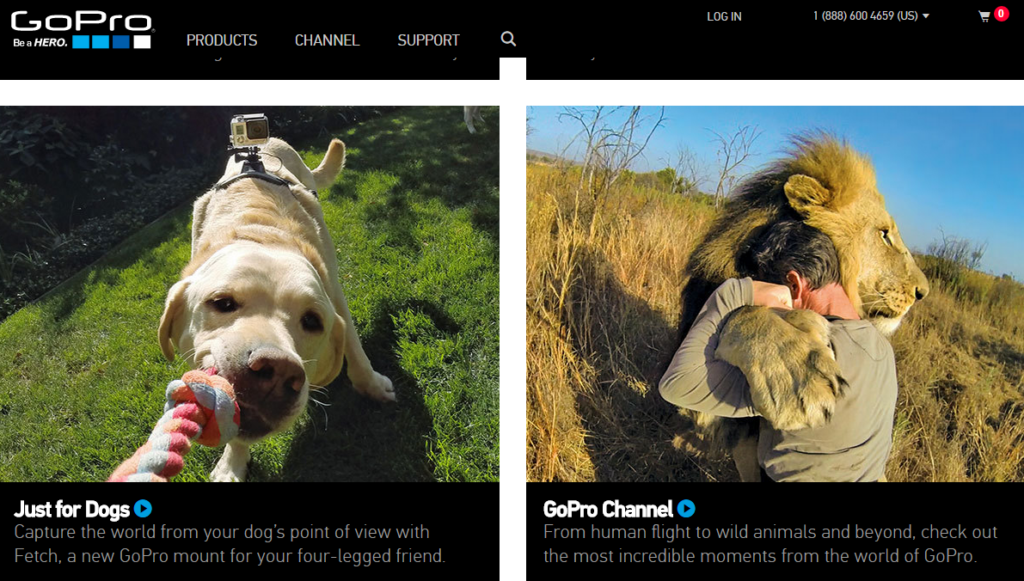The COVID pandemic has put a pause on many personal and business practices, with one stand-out exception. In the midst of COVID, digital transformation hasn’t slowed; instead, it’s actively accelerated as we try to keep up with today’s digital customers. “Digital transformation” has become a powerful buzz-word that has executives signing checks left and right. Many companies are investing heavily in digital, and while these investments continue to grow, the expected results often fail to materialize. But why? Technology and unsuccessful efforts to scale are often the first things we look to blame, but the real issue may be more deeply rooted.
Digital Transformation Requires a Culture Shift
In order to successfully execute a digital transformation, change must be driven from the top down. Beginning with management, the company as a whole must not only understand the goals and reasons for changing, but also the urgency for doing so to successfully prepare for a more digital future.
Companies are getting 50% more business and leads online than ever before, and this number will only continue to grow. To capture this ever-expanding market, it’s important to understand that the tactics and processes that got you to this point need to be an ongoing initiative. Digital transformation is often not one and done, it will not be sustainable without the future introduction of more digital practices.

How Can You Avoid Digital Transformation Failure?
You can start by making sure your team is on the same page regarding what tactics and strategies will make your business successful in the digital age. One method many companies are using to enter the digital space is through digital briefing centers and virtual events. Engaging the entire leadership team as well as your customers in the virtual space is a great way to lead a digital transformation in a world where fewer interactions are in person. Digital briefing centers also have the ability to be available at any time of day, allowing prospects to access your content at their convenience, not yours.
In today’s virtual world, differentiation through digital engagement is critical. Take a look at Bluetext’s work in the Digital Briefing Center space and find out how you can recreate the in-person experience.
Watch Bluetext founder, Jason Siegel, discuss the ways you can avoid digital transformation failure with Travelocity Founder and keynote speaker Terry Jones in this week’s Virtual Marketing Minute.
Content marketing is a consistently invaluable tool to increase conversions by educating your leads and customers. As we welcome a new year as well as a new decade, it’s important to understand the emerging content marketing trends that will dominate 2020. How should you change your digital content marketing strategy to keep pace with the ever-evolving nature of content marketing?
In this blog post, we take a look at 5 content marketing trends that will keep you ahead of the curve in 2020 and beyond.
Data-Driven Content
How are you, as a brand, determining what content is useful and relevant for your audience? That’s where data comes in. By harnessing the lessons of previously successful content marketing initiatives, companies are able to reverse engineer the data and identify KPIs that preceded the success. Once those KPI’s have been established, it is easier to create content in that same strain and capitalize on the proven success. A DC-based digital branding agency like Bluetext can assist you in determining successful KPI’s and creating the rich content your audience wants to read.
Smart Device-Centric Content
Although smart devices have been a key consideration in B2C content marketing for quite some time, this year, more focus will be placed on specific functions of smart devices such as voice search. Voice search is becoming such an integral mobile tool, 48% of consumers are using voice for “general web searches.” Companies looking to stay ahead of the curve should look to optimize their content specifically for voice search purposes. Understanding how users search via their voice will help you tailor your existing content for voice-SEO and create more effective headlines for future content initiatives. A DC digital web design agency like Bluetext can help by conducting an analysis of your audience’s voice searches and recommend changes to your existing content and future content to maximize the return on your investment.
Conversational Marketing is King
In the digital era which champions online shopping, consumers are looking to establish trust and connection through more personalized, authentic shopping experiences. Conversational marketing can aid your company in engaging with your audience in a more genuine way. By engaging in a conversation, your company gains access to more personalized data about your consumers such as their specific needs and future goals. Investing in tools such as chatbots or real human-to-human experiences can make all the difference in your competitive industry. As we progress through 2020, chatbots and other AI tools will continue to improve and positively impact lead generation.

2020: The Year of the Snippet
As we know, Google dominates the search engine market share worldwide, with a resounding 92.71% of the market. When considering a user’s search intent, Google will display what they call a “snippet” at the top of the page, which provides consumers with key points within a piece of content, allowing them to receive the information they’re looking for faster. As such, it’s becoming more commonplace for consumers to enter a longtail keyword into Google, knowing that they will receive the information they’re looking for via a snippet, without clicking any page links whatsoever.
In order to win that highly coveted snippet spot, companies should look to hire an interactive web agency such as Bluetext. Bluetext’s SEO analysts can conduct an audit of your current content and pinpoint exactly where changes need to be made in order to signify to Google crawlers that your content is important. Optimizing your content for snippets will greatly enhance user experience, as users will be able to find the information they are searching for concisely and quickly. Not only will an interactive web agency audit and enhance current site content, but they will also create a content strategy and editorial calendar so your brand can continually publish content your users are searching for.
The Popularity of Podcasts
According to a recent study, 51% of the entire US population has listened to a podcast in 2019. That figure is up by 7% from the previous year. As we look ahead to 2020, podcasts will continue to dominate, as that number is expected to keep rising. Although it may seem like everyone has a podcast these days, there are still opportunities for brands to get ahead of the curve and start their own podcasts.
That being said, if you see a clear demand for audio content within your market, ensure that you create a podcast the right way. Podcasts should have clearly defined KPI’s, a regular posting schedule, and content your audience will actually care to listen to. A Virginia internet & inbound marketing agency like Bluetext can partner with your company to assess the need for a podcast in your industry and among your competitors, help you create valuable content and even develop a paid advertisement plan to spread awareness via other podcasts your audience is listening to.
2020 is already well underway and in order to achieve success, companies need to get ahead of this year’s trends with a thorough and achievable marketing strategy and plan of action. A DC digital branding agency such as Bluetext can audit your current digital content marketing strategy and suggest recommendations to help improve your current trajectory. To learn more about Bluetext and how we can help you, check out our work here.
You say you want a revolution, but do you really?
Branding is an integral part of any company’s identity. Not only does branding make a memorable impression on your consumers, but it sets the tone for what new and existing consumers can expect from you. Smart branding also offers a valuable opportunity to differentiate yourself from your competitors.
For companies who may get the sense, both internally and externally, that their brand is outdated, it could make sense to rebrand. Rebranding your entire company might seem like an intimidating proposition, however, rebranding doesn’t have to mean a major overhaul. Something as simple as updating your brand’s color palette or your content’s tone of voice can have a huge impact on how the brand is perceived, breathing new life into the already-established company identity.
That’s where Bluetext comes in. A full-service D.C. based marketing agency, Bluetext has refreshed the brands of some of the most premier companies in the country, balancing brand history with brand vision.
Bluetext suggests these five tips when considering your next brand refresh:
Determine Your ‘Why’
For many companies, it can be easy to express interest in a rebrand. However, a company must first realize why they want to rebrand. This ‘why’ will dictate the entire process and ensure the goals of the project are being realized. For example, your ‘why’ might be:
- Our messaging is confusing for consumers and isn’t aligned with how sales go to market.
- We need to differentiate ourselves and stand out from our competitors in the market.
- We’re going after a new audience and need a brand that speaks to that market.
- Our company has expanded and we need a brand that is modern, flexible, and future-proof.
- Our brand and accompanying brand story is outdated and no longer reflects the company’s values.
- We recently went through a merger or acquisition and we need to hone in under one cohesive brand identity.
- Our brand doesn’t create a memorable impression on our target audience.
Invest in High-Quality Content and Visuals
It may seem simple, but investing in high-quality content portrays a degree of professionalism to your clients. Stock imagery might be tempting, but the personality of high-quality content and visuals will help you stand out in the market, increasing your relatability with your clients. See how Invictus reaped the rewards of investing in high-quality content.
Invictus Brand Manifesto from Bluetext on Vimeo.
Change Your Brand Colors
Depending on the size of your company and the amount of signage and collateral you own, changing your brand colors can be either a minor task or a large undertaking. Business psychology reminds us that colors have different effects on different consumers. Red, for example, can elicit feelings of warmth, excitement, and intensity. Green, on the other hand, can elicit feelings of tranquility, health, and harmony.
Deciding what emotional experience you want your customers to associate with your brand can send a very clear and competitive message to the market. For example, McDonald’s conducted a brand overhaul in 2009 across Europe, trading out their signature red logo, for more of an earthy-green look. This tactic was implemented to promote a more eco-friendly image, alongside other earth-friendly transitions such as environmentally friendly refrigeration and converting used oil into biodiesel fuel. The idea caught on so well, McDonald’s has gradually updated its restaurants nationwide with the refreshed color palette.

Focus on a New Facet of Your Story
If you have a sound brand offering in the market, you may just need to find a new story to tell. Keeping your messaging fresh and personal can excite your consumers, attract potential leads, and elevate your reputation in a busy industry. See how Bluetext partnered with D.C. United to create a multi-touch, multi-channel campaign to deliver messaging across multiple digital channels, social media, email, and microsites.
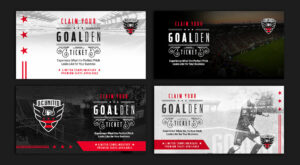
Act More Human
Authenticity is everything in marketing, there’s no question about it. In a recent survey by Stackla, 86% of consumers say authenticity is important when deciding which brands to like and support, with the most emphasis placed on authenticity by Millenials. Consumers want to connect with the companies they interact with. Promotional sales messaging can come off as disingenuous and pushy. Putting in the effort to bring an authentic and unified brand, campaign, or product message to market will make a bigger impact and ROI every time. Whether its social, blogs, email blasts, premium content, or even in-person communications, an authentic narrative will establish an authentic connection between your consumers and their advocacy for your company.
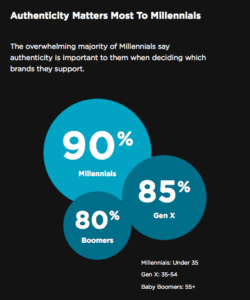
There are a plethora of ways to tweak your brand and excite your market potential. A top branding agency will tell you how a little can go a long way. Focusing on some low-hanging fruit can delay a full-scale revolution and save you time and money.
For more information for a refreshing brand opportunity with Bluetext, explore our case studies, work, and processes at www.bluetext.com/branding
What exactly is digital branding, how is it different from digital marketing, and why does it matter? These are common questions that top digital branding agencies hear from clients. Digital branding is an umbrella phrase that describes a variety of ways that companies and organizations can capture their customers’ attention online. In the digital age, having a presence and personality online is often just as business success as personal relationships.
The difference between digital marketing and branding is significant
Don’t let the similar use of digital in these terms confuse you – digital branding companies often use both terms in discussing their work, but the processes are different. Digital marketing activities are those which promote products or services based on their value proposition in an online setting. In comparison, digital branding is more nuanced. The best branding agencies promote their customers’ businesses by highlighting specific underlying characteristics and values that make their company unique. Top branding agencies take this a step further by advocating for a digital-first approach.
Take your brand online with refreshing campaigns
You can think of your company’s brand as it’s ‘personality’ and the different aspects of its personality are it’s brand assets. These brand assets typically include:
- Company Name
- Logo
- Color Schemes
- Messaging
- Slogans
- Fonts
- Advertising Methods
In an era where consumers turn to the internet for answers, positioning your company to stand out online is essential.
A company’s brand colors, fonts, logo design, and application should all be carefully curated to fit a specific personality.
The brand interactions of the previous era of marketing were one-directional: a customer might see your advertisement but wouldn’t be able to engage directly with your company through that channel. With the internet, an eye-catching digital marketing campaign can lead to conversions and a strong user engagement with memorable branding.
Digital branding by the digits
If you still aren’t sure what digital branding can do for your business, consider some key figures that illustrate the value of digital branding.
Recent studies have shown that purposeful branding significantly increases revenue. Modern consumers expect companies to have an online presence, and nearly 30% prefer to communicate with brands via digital avenues.
Because almost 50% of web searches are made from smartphones and mobile devices, companies have had to change the way they design their online presence. Top digital design and top branding agencies can transform dull contact pages stylized like Internet 1.0 websites of the 2000s into responsive and exciting digital destinations. See how Bluetext transformed Clarabridge’s digital presence with a branded video embedded into their website.
Leverage your brand awareness through ads
In 2018, more than 2.3 billion “bad ads” were taken down by Google — investing in your company’s digital marketing and branding with a top branding agency ensures your ads won’t get lost.
Branding is also becoming the go-to approach for advertising across digital platforms: A 2019 report showed that the most-used campaign type among all Facebook campaigns is Brand Awareness—55% of advertisers leverage Brand Awareness campaigns to drive impressions at a widespread and cost-efficient clip.
According to experts in the field, consistent branding across all channels increases revenue by 23%, and 89% of marketers say that building off that consistency and achieving brand awareness is their top goal.
Despite the emphasis consumers have placed on seeking out authentic brand interactions, only 60% of marketers think their brand is aligned with their long term goals. Bringing in support from a top branding agency is a surefire way to bridge this gap and polish your companies digital brand experience.
Digital branding means a versatile and flexible approach to engaging customers
Modern consumers spend their days on a variety of different media outlets and through multiple channels, which is a substantial shift in how people consumed information a decade ago. Companies need to respond by following their consumers to these new platforms to maintain visibility and relevance. As interactions increasingly move online, brands must adopt a digital-first approach.
The plan by the new chairman of the Federal Communications Commission to end the net neutrality regulations developed by the previous Administration is generating intense response across social media as well as news coverage. Whatever the outcome of the policy debate, it could have a significant impact on every brand’s digital strategy. If you haven’t been thinking about how you are going to prepare for this change, now is the time.
The debate over who controls the Internet is more than a decade old, and the carefully laid plans to implement a net neutrality system across the digital landscape has been thrown into turmoil by the new head of the FCC’s announcement that he would reverse these regulations has everyone scrambling. The depth of this issue and the debate can get complicated, but at heart, it’s about whether internet service providers such as Verizon and Comcast can charge different prices to different customers depending on their bandwidth requirements. On the surface, that seems like a reasonable request. After all, if you need more bandwidth, why should you pay extra for that?
On the other side, those in favor of net neutrality, are the content providers, including Google, Facebook, and Netflix, who stream high content including video that requires increased bandwidth. Their fear is that the service providers can discriminate against their content by charging more while favoring their own competitive content offerings, creating an unfair playing field. Regardless of how you feel about net neutrality and what the final outcome of this dispute will be, the FCC’s move could mean a lot to your digital strategy.
For example, if you have e-commerce capabilities that you are planning on expanding, or if you include high-quality video as part of your website content, you may be facing an entirely new regime of costs to have the same quality and speed of delivery. And as numerous studies have shown, slower website speeds, load times and latency all can have an impact on online sales. The Internet Association, which represents Amazon, Dropbox, eBay, Facebook, Google, LinkedIn, Microsoft, Uber, and Spotify, issued a strong statement this week criticizing the FCC’s move. In reality, those companies have the resources to purchase the faster services. Other Internet-reliant brands may not have that same luxury.
As Jason Citron, co-founder and CEO of the video game-centric chat and video-conferencing app Discord, recently told Wired Magazine, “Net neutrality is incredibly important for small startups like Discord because all internet traffic needs to be treated as equal for us all to have access to the same resources as the big companies.”
Nolan T. Jones, managing partner and co-creator of Roll20, a video-conferencing and community platform for tabletop role-playing gamers, went ever farther. “We believe this would affect more than just our voice and video equipment, but our entire ability to host folks interacting across our services,” says Nolan T. Jones, managing partner and co-creator of Roll20, a video-conferencing and community platform for tabletop role-playing gamers.
The new rules will most likely hit mobile apps first, as many internet services include limits on data use for mobile platforms. Having a solid mobile strategy in place that recognizes these limitations will be key.
Learn How Bluetext Can Help With Your Digital Strategy
As digital marketing evolves and new channels emerge to target business, consumer and government audiences, the pressure is on marketing firms to push clients into waters that are sometimes deep and potentially un-chartered. Let’s face it…another eBook or press release just won’t cut it in 2017. If those are the ideas coming from your marketing firm then it is time to shop for a new one.
Recently my partner Jason Siegel wrote a great 2017 Survival Guide blog https://bluetext.com/survival/ which highlights several areas that marketers need to be thinking about. Make sure to check it out.
I recently had a chance to visit the National Retail Federation’s 2017 BIG Show in New York. It was a great event and demonstrated how marketing firms can think outside the box at an industry conference that many would consider very traditional. Here are a few ideas that hopefully you will hear from your agency in the months ahead:
- Remarketing lists for search ads (RLSA), as defined by Google, is a feature that lets you customize your search ads campaign for people who have previously visited your site, and tailor your bids and ads to these visitors when they’re searching on Google and partner sites. If you dipped the toes in the water with re-targeting in 2016, then in 2017 it is likely that you will begin to hear about RLSA from your marketing firm.
- Instant Articles from Facebook. If you spend any time blogging or creating valuable content, the key is to find as many channels as possible to distribute it. With Instant Articles from Facebook, you hit a world of users that may not have been touched in the past, you can distribute easily, and you get solid analytics to see what how the content is performing. It is this continued innovation from companies like Facebook that marketing firms should be presenting to you on a regular basis.
- The continued emergence of augmented and virtual reality. This is an area of marketing technology that will cross the chasm in 2017 and go more mainstream, as more companies want to create unique and immersive customer experiences. As budgets go more digital, it is critical to think about all of the unique ways that virtual reality can impact revenue. Digital briefing centers, gamification, customer service – all of these areas can be impacted positively through augmented and virtual reality.
We are 30 days into 2017. Has your agency recommended any new ideas? Time is ticking and the last thing you want to do is look ahead to 2018 planning and have a wish list of ideas that stayed on the shelf for another year…
Digital Maturity is no longer just a buzzword – it’s where your competitors are now and where you need to be to succeed in the digital marketplace. As a top digital marketing agency, we are making the move to digital maturity a priority for our clients. The ones who are there already know the four essential elements they need to master and balance if they want to get the most from the digital market:
- Data-driven Marketing
- Mobile
- Customer Experience
- Cross-Channel Marketing
These are where digitally mature organizations are committing their attention and their resources, according to a recent survey by Adobe of its marketing customers. They are mining their troves of data to understand their customers, predict their needs and preferences, and personalize their experience to deliver the right messages at the right time. Personalized engagement must translate across whichever device their customers choose, and wherever they go regardless of channel.
The first step towards digital maturity is analyzing where you are on that path. Here are eight questions to ask to find out if you are there yet, if you’re getting closer, or if you need a thorough strategy to reach it:
- Do you have a digital strategy that will achieve your goals?
- Are your marketing activities being adopted across the organization, or is your marketing team working alone?
- How do you compare to your competitors, especially those who are further along the path?
- Are you leveraging your tools to reach customers at the right time with the right message?
- How have you tapped into your customer data? Are you getting the insights you need to plot your strategy?
- How is the customer experience? Is it building to the type of engagement and relationship you need to meet your marketing goals?
- Is mobile a top priority?
- Are you engaging customers across every channel, and is the story you’re telling consistent and seamless?
No one expects you to reach digital maturity quickly. It takes time, commitment, focus and a disciplined approach. Without a clear strategy, you may be left behind. Need help? Call Bluetext, and find out how we can help.
In a recent post, Bluetext Creative Director Jason Siegel described the differences between a top digital marketing companies, top marketing companies and top marketing agencies. The answer was in the range of services they provide. In this post, we’ll answer another frequently asked question: What’s the difference between a marketing firm and a marketing agency? This is more than a trivial question, and and it can be confusing. But here’s one reason why it is an important question to address: The term “marketing firms” (as well as “top marketing firms”) is by far the most widely used search term when looking for information on vendors that provide marketing services.
In the traditional use of these terms, there was a real difference. Agencies were typically made up of a collection of “agents,” or independent individuals who operated under one brand for their own marketing and support services. Think about insurance agents who all sell State Farm services but run their own separate businesses. The same is true for real estate agencies and investment services. All sell one brand’s services, but in the traditional sense act as their own companies doing so. Firms, on the other hand, tended to include individuals all working for the same company as employees (or partners). Yet, this hasn’t been the cases in marketing for several generations.
What’s particularly interesting about the use of the term is that most companies that provide these types of services–including Bluetext–don’t refer to themselves as firms, but rather as agencies. There are several reasons why we prefer the term “agency” over “firm”, none of them scientific or based on a common standard of use. First and foremost, a firm implies a smaller group of specialists that provide a limited range of services, in this case in the marketing field. It can be high-level strategy, but often not wide-spread implementation or execution. In other words, it limits the company in terms of perception about what it looks like and what it does. So for example, a research firm will only provide that type of service, while a communications agency might include research in its full scope of services. In the case of Bluetext, we provide a full-range of marketing and communications services–including high-level strategy–that includes implementation and not just consulting.
Second, the term “firm” is more often used to describe a smaller company that specializes in traditional public relations services, so that “PR firm” is an accepted term for those types of service providers. As a provider of a full range of marketing services, including public relations and media outreach, the use of the term “marketing firm” is too limited for what we do. Marketing firms like ours do so much more than that, we cannot take the chance of being confused for a pure-play PR firm.
For clients, it’s important that they recognize this distinction so that when they are looking for the right marketing partner, they know they are getting one with the broadest range of services. We tell our prospects that the advantage of an agency like ours is that once we understand your challenge, the problems you are trying to solve and the successes you are trying to achieve, we can craft an integrated campaign using all of the marketing services that will allow you to reach those goals. That might mean a combination of traditional public relations, content marketing, advertising and paid syndication, and a digital campaign to reach the target audiences. Only a full-service marketing agency can provide that type of solution.
And in today’s communications landscape, there is no one magic bullet to drive customer engagement. It takes a range of options and approaches that require a full-service agency, and not a specialty firm. To learn more about the range of services Bluetext offers and view our Hall of Fame.
Before Twitter, LinkedIn, search engine optimization, and mobile apps there existed an individual within many enterprises that has gone all but extinct today: The public relations director. When my own PR career started on the agency side two decades ago, our in-house client contact would often include one or more professionals exclusively focused on public relations. Yes, some corporate communications positions have endured, but over time organizations saw less value in PR specialists, and more interest in hiring multi-disciplined marketing leaders and staff for which yes, public relations was one function of the broader purview. As a result, in-house PR titles have dissolved faster than the polar ice caps as it was expected that marketing professionals would come with built-in public relations skills.
A similar scenario is being debated with digital marketing leaders, as some enterprises question whether a separate position is required, or if the CMO should be expected to lead digital marketing efforts. The conversation bubbled up in an AdWeek article last week, which chronicled the departure of Umang Shah as director of global digital marketing and innovation at Campbell Soup Company. The move was announced as the company’s CMO, Greg Shewchuk, assumed digital marketing strategy responsibilities.
Addressing the move, Campbell’s spokesperson Megan Haney told AdWeek that, “Digital marketing is a core competency of all our marketers. Umang’s role was a global position that will be not be filled. What we’re doing is recruiting a team of digital experts with specialist skills to be part of our U.S. marketing team.”
Haney’s response reflects that fact that many organizations expect CMOs to arrive hard-wired for digital, and while global corporations like Campbell Soup may have a dedicated digital team, it will operate under the stewardship of the CMO.
All of this said, the shift is far from universal. The AdWeek article goes on to cite a number of marketing experts who acknowledge that while digital is an integral part of marketing, familiarity with digital channels does not by default equate to an understanding on how to best use these channels and data for maximum impact.
Organizations seeking the right balance of internal and external digital marketing strategy and execution resources should take a handful of factors into consideration:
- Have you made significant digital marketing investments that aren’t paying off?
If you have hired digital specialists and invested in digital activities but are not seeing the expected ROI, this may be an indication that the digital initiatives lack proper strategy and innovation. There can be many reasons for this, ranging from the lack of a digital director to marketing leaders that are stretched so thin that there is no way they can devote the proper time to creating and tracking digital efforts on a day-to-day basis.
- What are the core competencies of your CMO?
CMOs bring a diverse range of skill sets, and increasingly data analytics is a competency business leaders seek to analyze the efficacy of digital marketing programs. Alternatively, some CMOs with strong data chops may not have as much experience developing innovative digital marketing campaigns that encompass video, web, social, virtual reality, etc. For organizational leaders, it’s about putting together a puzzle of personnel and capabilities that can deliver the full digital and traditional marketing strategy and execution stack that leaves no gaps.
- Can and should the CMO run the digital marketing stack?
It’s not just people and process that CMOs and digital marketing directors must run, its tools as well – digital marketing technology tools that have multiplied exponentially just in the last five years. Marketing leaders could spend a good part of their day evaluating these tools and trying to figure out the right combination for their organization based on need, budget and impact.
Marketing Land columnist Jim Yu reiterates the challenge CMOs face to navigate a web of tools that often focus too little on performance-led technology that drive a healthy ROI. Yu speaks of building digital marketing stacks that can plug gaps in the “digital performance gap,” and it is worth questioning whether all of this can and should fall to a CMO versus a dedicated digital strategist.
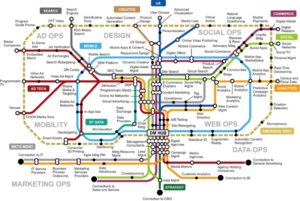
- How much kool aid has the marketing team been drinking?
Your marketing team may know digital, and it may know your company, but does it have a firm grasp on how competitors are marketing to target audiences? And is it up to speed on digital marketing innovation that can help the organization rise above the noise in selling products and services? While digital marketing agencies may not know your organization as well as internal staff, they can offer a gut check perspective beyond what may be possible with an internal team that is “too close” to be objective.

Innovation in content marketing is nothing new, but sometimes it takes well-known brands and how they drive their marketing operations to recognize what’s really valuable. We’ve gathered some top content marketing examples and tips from some of the most recognizable global companies. Some aren’t only about innovation, but rather they show companies sticking to what’s most important about that brand. Others are more on the cutting edge. Here are my four top picks:
1) Pick a strategy that is core to your brand. IBM is known for three key assets: Its technical expertise, its role as long-time market leader, and its position as a respected source of IT information. To match its steady flow of content to its brand attributes IBM follows the same path. To uphold its reputation as a technology leader for more than a century, it has to produce authoritative content that underscores its thought leadership. Because the company is a technical powerhouse, it has to ensure that the content is technically authoritative. And because the company is trusted by millions to provide detailed descriptions of challenges and solutions, it has to make sure that its content is at an expert level. While trying to follow in IBM’s footsteps is not an easy task, it provides a strong lesson for how to approach your content. It should be well-written, possess authority, and have an expert voice. That’s what customers want and respond to.
2) Don’t be boring. This might sound obvious, but with many business-to-business or business-to-government solutions, it’s not always easy to sound interesting on technical topics. Resist the temptation to edit out content that might be fun and relevant, and that plays on popular topics or cultural experiences. Take Hootsuite as an example. There’s nothing very sexy about a tool that allows you to manage your social media posts. It’s mostly a dashboard with a number of useful applications tacked on. But Hootsuite rose to immense popularity by playing off a popular theme, the HBO television series “Game of Thrones.” It created a video called “Game of Social Thrones,” using graphics and music similar to the television show to demonstrate its capabilities. Each popular social platform has its own Game of Thrones city, and logos and images are cleverly used throughout. Timing is everything, of course, and the Hootsuite video garnered lots of buzz on YouTube. Hootsuite also makes sure that its content, even when serious, is fun, increasing its popular appeal. So while your brand or product may be technical and specialized, you can still write content with which your audience will identify on a popular level. The lesson: Don’t feel that you need to be serious all of the time. Create some fun, light content now and then.
3) Tell stories. It’s easy to fall back on technical explanations, and these are often important when conveying the value that a product or solution brings to the market. But telling a human interest story that illustrates what that technology brings to customers can be much more penetrating. Few do this better than Microsoft, whose “Stories” blog posts rarely even include the term software. Instead, they tell stories of how Microsoft technology has helped people, and in some cases changed their lives. In one example featuring sportscaster Daniel Jeremiah, the story is one of the human experience, of triumph, challenge and redemption. Daniel explains how as a scout for the Philadelphia Eagles, when he didn’t trust his instincts and the data at his disposal, he lost the opportunity to push for Seattle Seahawks superstar Russell Wilson. It’s a fun,personal and powerful story, and one that demonstrates Microsoft’s leadership not with a hard sell of its products, but with a tale that will stick in your mind.
4) Go visual. Visual images draw attention, tell a story, and help illustrate a brand’s true value. The problem is, many companies, particularly in the technology space, don’t believe they have much they can show using photos or high-impact graphics. I’m going to put forward GoPro as a great example of a company that relies on the visual to tell it brand story. And yes, I recognize that it’s not a fair comparison—a company that sells action-oriented video equipment of course would have great videos to show off its products. But the thing about GoPro is that it almost never actually shows its cameras in its marketing efforts. Instead, GoPro focuses on its users. One of its leading cameras is called the Hero, and its campaign is to turn its customers into heroes. Much of its content is created by passionate users who are, in turn, becoming public heroes. Companies who aren’t in the video business can take a similar approach. Tell the story of your customers and end users using video and other visual assets to make them the heroes—for the challenges they are addressing and the problems they are solving. At the very least, use visual content and images to enhance your text-based content.
Taking an innovative approach to content marketing can pay off in spades for any brand willing to think creatively and act accordingly. But sticking to some basic truths about what customers want and expect will increase your brand footprint and drive market recognition and share.
